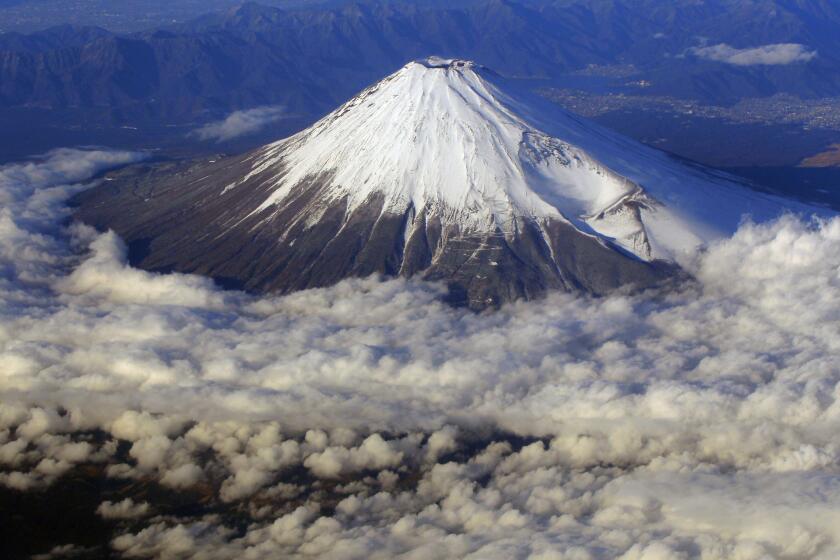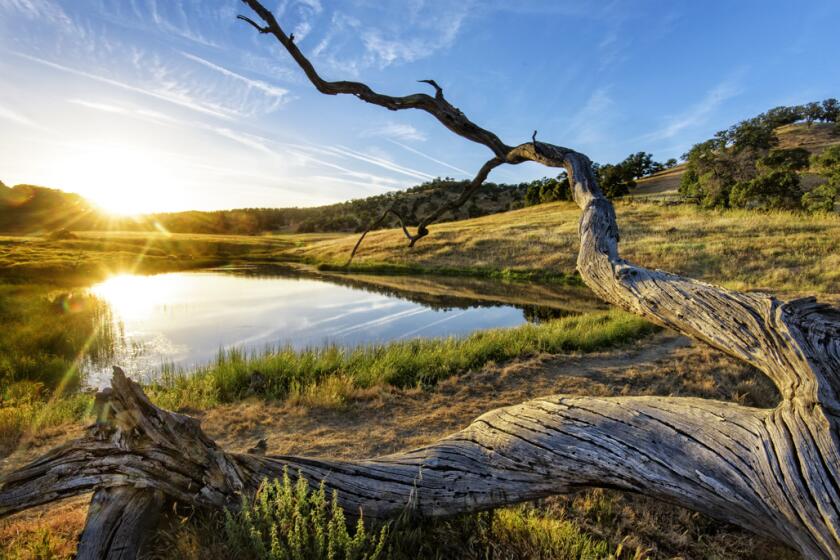Parking It in Rainy Portland : From Small to Huge, City Has a Park for Every Taste
Of all the cities in America, Portland has more land devoted to parks--9,422 acres, 12% of its total area--than most. And Portlanders, it seems, have always been interested in their public greens.
Ordinances still on the books prohibit standing on a toilet seat and whistling, dancing, singing or roller-skating in public restrooms in the parks of this city. The ordinances, of course, haven’t been enforced in recent memory.
In downtown Portland, a square block was set aside in the late 1800’s as a park for women and children. Men entering the park unaccompanied by a woman were subject to arrest. Benches were marked “Women and Children Only.”
“With women’s liberation and changing times, Womens’ Park is an anachronism. Men are no longer arrested for using the park. It’s a throwback to more graceful and gentler times,” said Ross Walker, 43, director of communications for the Portland Bureau of Parks and Recreation.
In a median strip on Front Avenue in the heart of the city is Mill Ends, a circular, 452.16-square-inch park planted in marigolds. It is listed in the Guiness Book of Records as the world’s smallest park.
This oversized flower pot, declared a city park in 1976, is surrounded by concrete and marked with a plaque.
It was the brainchild of the late newspaper columnist Dick Fagen of the old Oregon Journal who looked down on it from his office window. The spot was a hole meant for, but never filled with, a lamp post. Fagen fancied it as a park for leprechauns presided over by the chief leprechaun, Patrick O’Toole. It was the subject of many of his columns.
Several weddings have taken place at Mill Ends Park--in the median in the middle of busy Front Avenue. There is a big celebration there every St. Patrick’s Day.
Portland’s 180 parks are special in so many ways, from quaint Mill Ends, 24 inches in diameter, to huge Forest Park, an eight-mile-long, one-and-a-half-mile-wide urban forest filled with hiking trails.
Early in the city’s history, several square blocks downtown were set aside as parks. In 1969, two miles of a four-lane expressway fronting the Willamette River near the civic center were removed to make way for still another, Waterfront Park.
Cathedral Park lies under the eastern approach of St. John’s Bridge and is named after the bridge’s magnificent Gothic archways. Concerts are held under the bridge--one of 11 spanning the Willamette River there--in the natural amphitheater of Cathedral Park.
The city’s 11 acres of Park Department-maintained cobblestone street medians, pedestrian plazas, and downtown malls are dotted with large attractive kiosks, trees, flowers and fanciful bronze statues. In one, baby bears cling to the side of a fountain in which an adult bear stands holding a salmon in its mouth.
Appropriately in Portland, where rain is frequent (T-shirts here proclaim: “Oregonians don’t tan, they rust”), is a life-like statue of a man holding an umbrella. Portland’s popular bearded mayor, Bud Clark, posed in front of another Portland statue, of a nude woman, for a now-famous poster. In the picture, Clark is shown from the back wearing a flop hat, boots and long overcoat which he has pulled open in front of the statue. The caption reads “Expose yourself to art.”
Portland’s towering copper lady, Portlandia, also appears on the city seal, kneeling and holding a trident. Dedicated two years ago, Portlandia is reputedly the largest hammered copper sculpture erected since the Statue of Liberty. Then, there is the 1905 statue of Sacajawea, the only woman in the Lewis and Clark expedition. Executed by sculptor Alice Cooper, the statue of Sacajawea was paid for by contributions from women in every state, and unveiled by Susan B. Anthony.
Pioneer Courthouse Square, Portland’s new brick-terrace park in the center of the city, is affectionately called “Bang Heads Park.” More than 60,000 Portlanders paid $15 each for a brick in the park inscribed with a person’s name. Unfortunately, the bricks are not alphabetically arranged. Every day scores of people spend hours, heads down and sometimes banging heads, looking for their brick.
The 320 drinking fountains in downtown Portland are cared for by the park department. The drinking fountains were gifts of lumberman Simon Benson in the early 1900s. Why he gave them to the city isn’t clear.
One story has it that Benson wanted people to drink water instead of beer, wine or hard liquor. Another is that he was irritated because he could never find a place to get a drink of water in downtown Portland.
The city is also filled with spectacular fountains--of the gushing, not the drinking kind--the most famous of which covers an entire block. That’s Ira’s Fountain, named after the late Ira C. Keller, chairman of the Portland Development Commission.
In Portland, a walk in the park is a popular pastime at lunch, breaks, in early morning, during the evening and on weekends. Other users include the 650 men’s and women’s softball teams, over 10,000 adults who regularly play baseball in city parks until 11 p.m.
Getting there is getting simpler all the time. Tri-Met, Portland’s public transit system, has gained national recognition for its service. In “Fareless Square,” a 340-block downtown section of the system, passengers can ride anywhere within the area free, any time, any day. And Portland’s new Metropolitan Area Express (MAX) light rail runs 15 miles from downtown past the airport to Gresham, an eastern suburb.
Portland author Beverly Cleary wrote 20 children’s books centered around Grant Park, where her main character, Henry Huggins, dug for worms. Mt. Tabor is a city park with an extinct volcano used as a natural amphitheater for concerts.
Elk Rock Island is a 15-acre park in the middle of the Willamette reached only by boat. In summer the park department takes boatloads of children to Elk Rock Island for treasure hunts. Mt. Hood, four other Cascade peaks and the Portland skyline are seen from a splendid vista point in the internationally acclaimed Washington Park Rose Gardens, the oldest public rose garden in America. While walking through the rose gardens, visitors can see Portland’s official bird, the Great Blue Heron, soaring past downtown skyscrapers.
At Hoyt Arboretum, trails wind through 214 acres of dense forest containing 600 species of trees including the largest collection of conifers anywhere. A 140-mile hiking trail encircles the city. At Kelly Park, the confluence of the Columbia and Willamette rivers, picnickers watch a daily parade of ships from around the world.
“Our parks represent the value system of Portland,” said Park Superintendent Cleve Williams, 49. “Residents here take great pride in their parks. This is one of the cleanest and livable cities in America. Unlike other cities there is virtually no litter or graffiti.”
Sign up for The Wild
We’ll help you find the best places to hike, bike and run, as well as the perfect silent spots for meditation and yoga.
You may occasionally receive promotional content from the Los Angeles Times.



